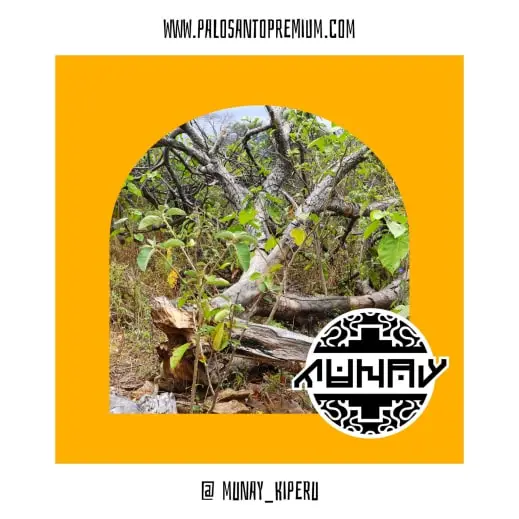Is Palo Santo, sacred wood, in danger?
In Munay, we have a passion for sustainable Palo Santo, the aromatic wood that has been used for centuries in the indigenous practices of our country. Munay currently has everything from incense sticks and jewelry to essential oils. Therefore, it has generated concerns about the state of conservation of the Palo Santo tree.
Munay –Unconditional love in Quechua- is based on a deep love and respect for our planet, we are committed to the sustainable sourcing of our products in a way that promotes the survival of the species. Palo Santo is no exception. However, amid growing anxiety that Palo Santo is in danger of extinction, we wanted to share more about the true nature of this tree, as well as tell you a bit about our sustainability efforts.
So the important question is for the palo Santo sustainable: Is Palo Santo really in danger of extinction? No. In fact, the International Union for Conservation of Nature (IUCN) released a review of Palo Santo’s conservation status in late 2019, declaring it “least concern.”
The IUCN has declared Palo Santo to be “of least concern” on a global scale; however, some national governments also determine a plant’s regional conservation status. This means that a plant may be listed as endangered in one country and not in another.
It is important to remember that while the Palo Santo tree itself is not endangered, its natural habitat, tropical dry forests, is even more endangered than tropical rainforests. To further complicate matters, improper harvesting of Palo Santo could be contributing to the decimation of tropical dry forests and of Palo Santo species as a whole. Therefore, consumers should ensure that the Palo Santo they buy is produced sustainably and ethically.
Munay’s Palo Santo products are sustainably sourced from Peruvian reserves, harvested after the wood has naturally fallen and been allowed to dry for some time. At least 5 years. We responsibly distill our Palo Santo essential oil in a way that promotes the sustainability and reforestation of the tree itself, allowing for its continued growth.
